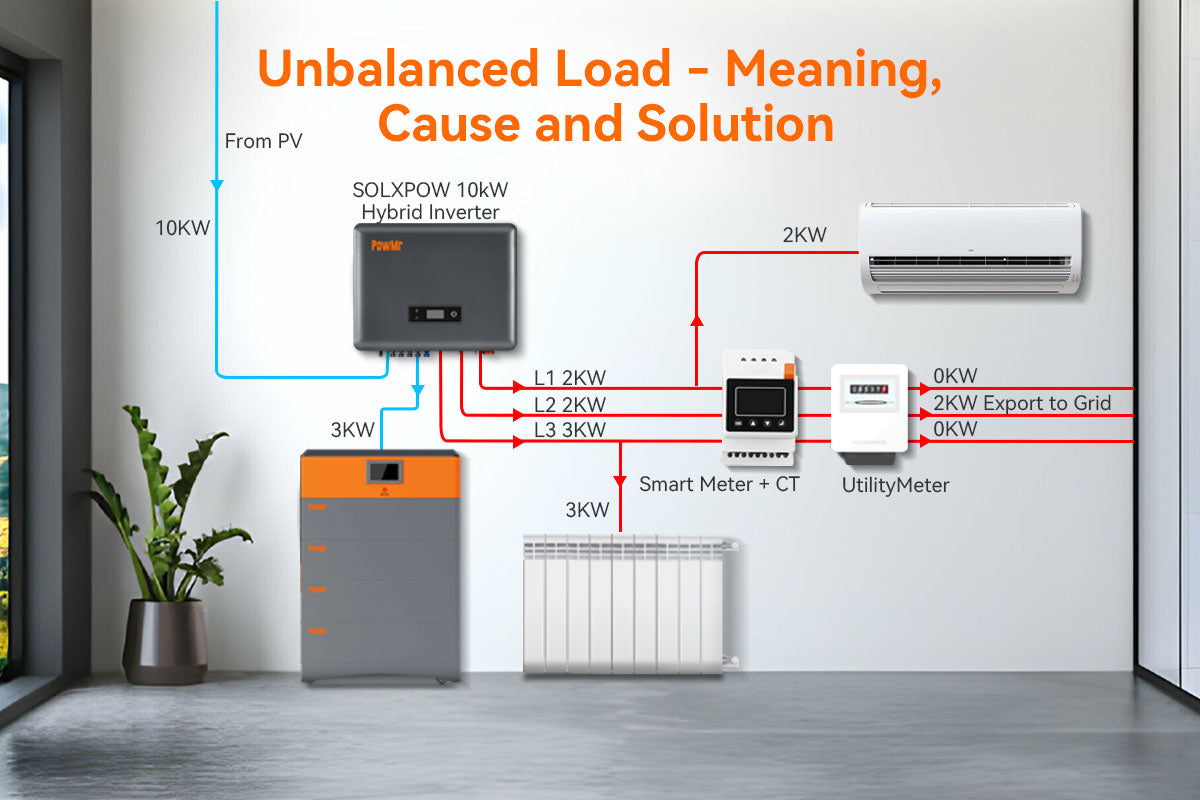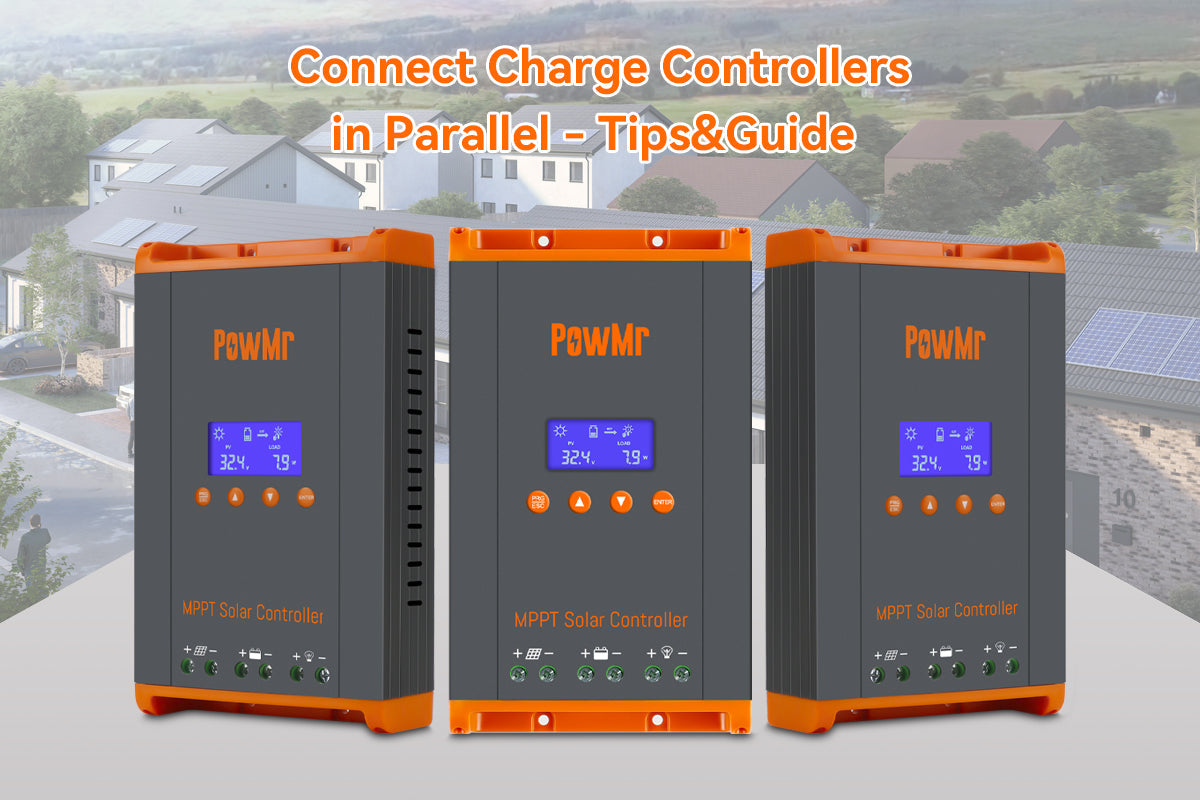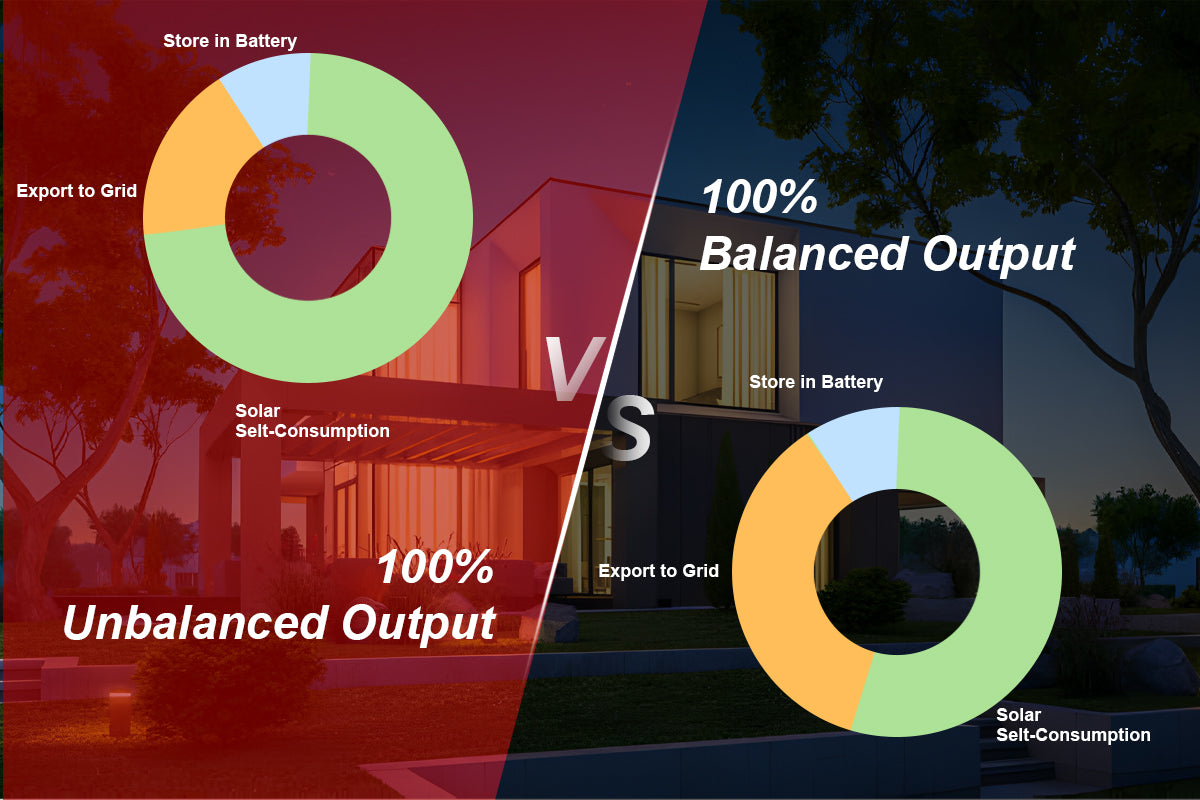The primary power source for the majority of industrial facilities, as well as numerous small shops and garages, is the ubiquitous three-phase power supply. Three-phase power systems serve as the fundamental framework for modern electrical infrastructure, offering a resilient and efficient method for distributing electrical energy. To ensure both safety and efficiency, it is imperative to meticulously plan the setup of a three-phase electricity system.
In this article, we will elucidate the meaning of unbalanced loads in a three-phase system and delve into their potential causes. Additionally, we will integrate the discussion with three-phase solar power systems, explaining how to alleviate such imbalances. Furthermore, we will introduce the unbalanced output functionality in solar energy systems to enhance overall system stability and efficiency.
Unbalanced load meaning and causes
Unbalanced load is a phenomenon occurring when the current or voltage in each phase within three-phase power systems is unequal.
In a perfectly balanced three-phase system, the loads on each phase are identical in terms of magnitude and power factor. However, in real-world scenarios, the loads connected to each phase may have different power requirements.
This imbalance can occur when certain devices demand three-phase power, while others function independently using single-phase power. Additionally, an unequal distribution of power across phases may result from variations in the total power consumption of equipment on each phase.
In addition to uneven distribution of power consumption among electrical equipment, it is also possible for components of the power system to contribute to unbalanced loads, such as:
-
Unequal Impedances
Variations in the impedance of components which can be due to differences in cable lengths, wire sizes, or variations in transformer resistances. -
Faults in the System
Faults occur when one of the phases in a three-phase system is lost. This can happen due to a blown fuse, a faulty circuit breaker, or a damaged conductor. The remaining two phases then have to carry the entire load, resulting in an imbalance. -
Harmonics
Harmonics, which are multiples of the fundamental frequency, can introduce unbalanced currents and voltages in a three-phase system. Nonlinear loads, like variable speed drives, can contribute to harmonics.
What happens if load is unbalanced in three phase system
1. Unbalanced loads in a three-phase system can cause overload in some phases and underload in others, impacting appliance performance, system efficiency, and risking equipment overheating and damage.
2. It can generate harmonic currents and voltages, leading to resonance issues in the system, which in turn cause voltage distortion, equipment damage, and additional power losses.
3. Unbalanced loads can also result in poor power factor performance, where low power factor leads to increased energy consumption and higher electricity bills.
Unbalanced load protection
1. Reactive power compensation
In practical efforts, collect and record pertinent data to enhance predictive capability regarding power load conditions. The utilization of reactive power compensation devices , along with the strategic connection of varying capacitor quantities between corresponding phases and neutral lines, significantly contributes to compensating each phase and effectively mitigating unbalanced reactive currents.
2. Control the imbalance rate
Achieving absolute load balance in real three-phase power systems is often challenging, and our focus is on striving for relative equilibrium. To attain this goal, measure three-phase line currents and redistribute the load from the phase with the highest current to balance the three-phase currents as closely as possible. This ensures that the imbalance of three-phase currents aligns with the balance criteria established by national and relevant authorities. Maximum inbalance should not greater than 5% between phases.
When calculating the imbalance of three-phase currents, the commonly used formula is as follow:
% Unbalance = (MAX Phase Current - Three-Phase Average Current)/Three-Phase Average Current*100%
For example:
Assuming three-phase currents are IA=9A、IB=8A、IC=4A, the three-phase average current is 7A. The differences between phase currents and the three-phase average are 2A, 1A, 3A. Taking the maximum difference, i.e., (MAX Phase Current - Three-Phase Average Current) = 3A, the three-phase current imbalance is 3A/7A * 100%.
Three-phase inverters typically feature overload protection and overvoltage protection functions. In the event of a severe imbalance phenomenon, the inverter will automatically implement corresponding protective measures. Therefore, referencing the aforementioned calculation method and appropriately distributing loads is equally applicable to three-phase solar energy systems.
So, before activating the three-phase inverter to power the load, it is essential to pre-plan the electrical devices to be connected to each phase, ensuring that the power for each phase is as equal as possible. Assuming the total output power of the inverter is 15 kW, each phase's power should constitute one-third of the total power, which is 5 kW. During system operation, the mentioned method can be applied for monitoring.
For three-phase photovoltaic systems, we highly recommend the SOLXPOW hybrid inverter. This inverter allows for a load imbalance of 100%/110%, enabling users to flexibly allocate loads and maximize the benefits from solar energy while ensuring the system's reliability and safety.
Why do you need phase-level 110% unbalanced inverter?
The SOLXPOW series inverter is a multifunctional grid-tied hybrid inverter, equipped with a dedicated smart electricity meter. The cloud platform monitors and controls the entire power system, supporting 110%/100% (depending on the specific model) unbalanced output.
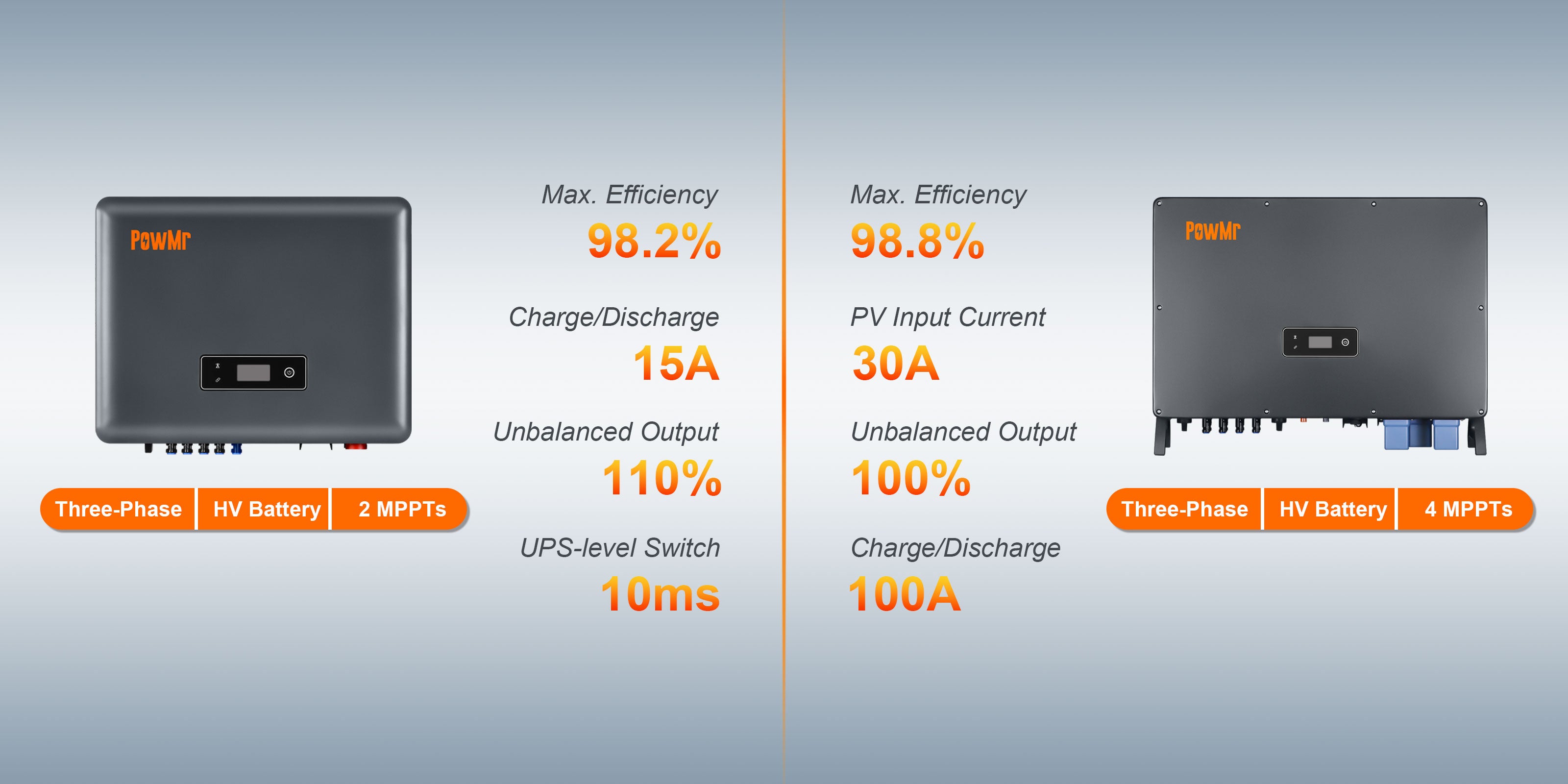
What is 100% or 110% unbalanced output inverter?
A 100% unbalanced output signifies that each phase of the three phase inverter can generate power ranging from 0 to 1/3 of the rated output power. In other words, the variance in output between any two phases can be as much as 1/3 of the rated output.
A 110% unbalanced output tolerance accommodates an unbalanced load rate of 110%, signifying that the output power of each phase in the inverter can now reach 1.1 times the value achieved with a 100% unbalanced output, (0 to 11/30 of the rated power). The unbalanced output fuction enhances the solar system flexibility and overall performance.
The benefits of unbalanced output
If you encounter situations such as export limitations in certain countries or individual phase power charging in specific locations, the SOLXPOW three-phase inverter stands out as the optimal choice for the following reasons:
1. Maximum the self-consumption
In countries limiting exports, the inverter's unbalanced output aligns output power with the load consumption of each phase. This approach differs from outputting limited power based on the minimum phase demand, preventing significant solar energy wastage.
2. Minimum the electricity bill
In locations where power is charged individually for each phase,
the Inverter individually distributes power to each phase, irrespective of the minimum load phase. It smoothly transitions to grid power during insufficient solar conditions, reducing dependence and providing substantial cost advantages. Surplus energy is fed to the grid to enhance overall efficiency.
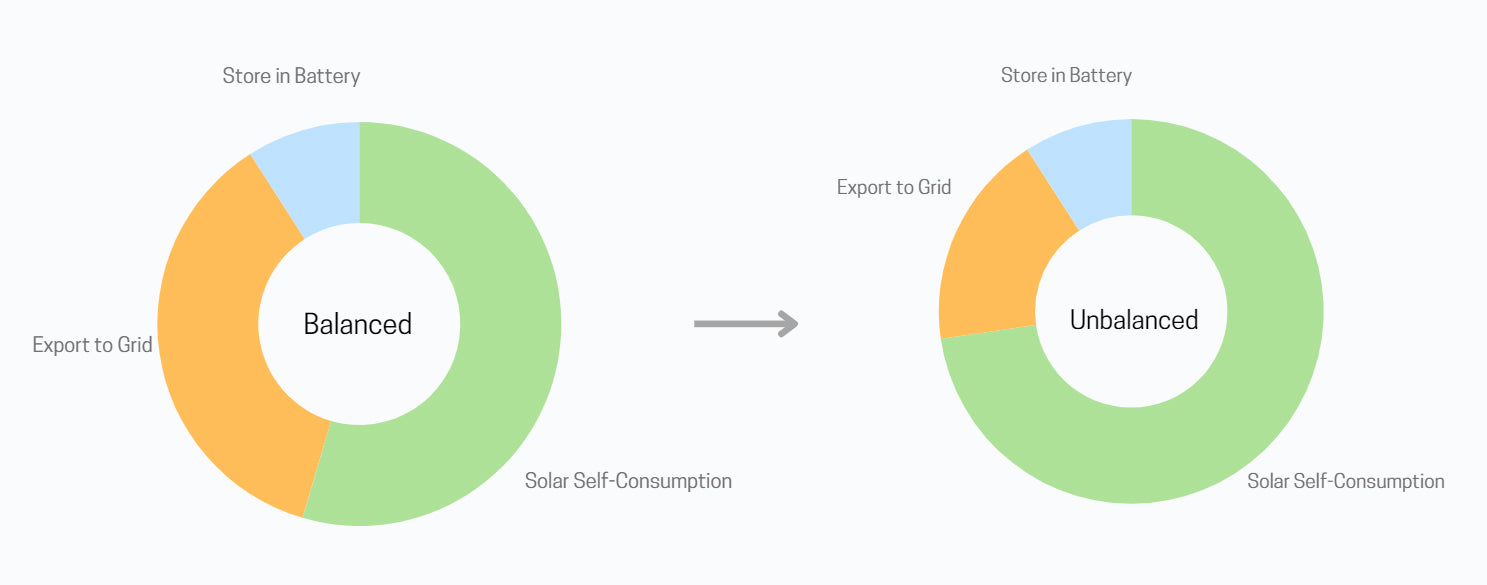
Conclusion
Here is an overview of the concept, causes, calculation, and recommendations for mitigating unbalanced loads in three-phase power systems.
In our upcoming blog posts, we will delve into the realm of three-phase photovoltaic systems, comparing inverters with 100% balanced and 100% unbalanced outputs. We will emphasize the advantages of using a 100% unbalanced output inverter in various scenarios, elucidating its superior performance under different conditions. Feel free to subscribe to our newsletter for more insights or reach out to us for product inquiries.

